
Arquivo para April, 2023
Art, the awareness and the divine
Art is an expression of the human soul, “it says the unspeakable, expresses the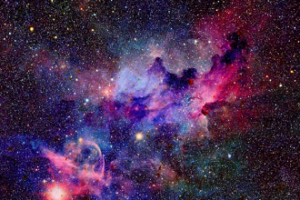 inexpressible, translates the untranslatable” it is a phrase attributed to Leonardo da Vinci, without it we cannot humanly express the beautiful and we are not opposed to the destructive and reductive vision of the simple look only what we see.
inexpressible, translates the untranslatable” it is a phrase attributed to Leonardo da Vinci, without it we cannot humanly express the beautiful and we are not opposed to the destructive and reductive vision of the simple look only what we see.
Humanity has built devices to see and feel further and further away, the James Webb telescope is making us look and study the deepest part of the universe, but an entire universe exists in each human soul and even the most advanced technological device can translate it or imitate her.
This indeed is the great human delusion, the myth of machinic intelligence that surpasses human intelligence, called the singular point, the desire for eternal life transporting human feelings to machines, the human delirium built advanced technologies, which is good, but imagining it as endowed with human soul and emotions is a delusion of those who do not believe that in the mystery of the infinite universe there is a consciousness of a Being and not of rocks and chemical compounds.
The fact that we got confused in the course of history, reducing it to idealist subjectivism, is not worthy of the human journey, not even of science that for Edgar Morin it is necessary to return to the point where we see and admit uncertainty, after all this is one of the quantum principles.
Recently an Integrated Information Theory (ITT) term created by Giulio Tononi, created the idea that it was possible to calculate a “phi” number representing the connectivity of networks, be it the brain, a circuit or the atom, now this idea has advanced and scientists claim that it is possible to calculate this “phi”,
Researcher and cognitive scientist Susan Schneider, told New Scientist. “I believe that mathematics can help us understand the neural basis of consciousness in the brain, and perhaps even machines, but it will inevitably leave something out: the quality of that experience, felt internally.”
For Christians, even the disciples found it hard to believe what they saw after the resurrection of Jesus, they went to the tomb and saw “a gardener”, they walked to Emmaus and did not realize that they were accompanying him and finally Thomas wanted to “touch his wounds” so that to believe.
In John 20:27, Jesus tells him: “Put your finger here and look at my hands. Extend your hand and place it in my side. And be not unbelieving, but faithful”, to those who believe this is a fact.
For a philosophy of the look
It already exists, I even looked for the roots and couldn’t find it and that’s where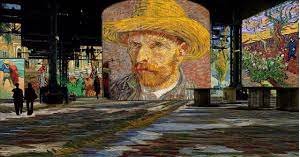 the problem lies, dialoguing with what is present in culture, philosophy and art about what the look is and how it is possible to develop it from there onwards in order to dialogue with contemporary culture.
the problem lies, dialoguing with what is present in culture, philosophy and art about what the look is and how it is possible to develop it from there onwards in order to dialogue with contemporary culture.
For example, a good reading of Schiller we have already mentioned this week his “Aesthetic education of man”, in art I did not quote Gustav Klimt on purpose, he has elements of symbolism and all art literature recognizes it, but his “art nouveaux” brings something again (photo of his work the hug).
Edgar Morin, when analyzing “Mass culture of the 20th century”, emphasizes the multiple meanings of modern man: “the language adapted to this anthropos is audiovisual, the language of four instruments: image, musical sound, word, writing. A language that is all the more accessible insofar as it is the polytonic involvement of all languages” (page 45) and thus this look can be both dispersed and integrated, giving this new language a new look.
It is no longer specific to a single medium (sound, image and objects have existed as art since time immemorial), for Morin this is “of the game that lies on the fabric of practical life” (idem) and this symbolism in Klimt is in fact a vision integrated, but not specific to him, I also see it in Kandinsky his works also seem to have music and poetry, even though they are just pictures.
In cinema, the Japanese director Akira Kurosawa, in one of the paintings of this film Life, integrates painting and cinema by giving movement to Van Gogh’s paintings, thus, more than multimedia, these artistic movements can be called transmedia, due to the fact that they integrate aspects of art .
This re-educates and stimulates the look, but there is the aspect of the possibility of dispersing the look, but nothing can do this more than modern horizontal monomedia and social “media” are not out of it, so the re-education of the look goes through the stimulation of other senses and the spiritual that is not that idealist (see previous post) that are separated.
So, despite being a symbolist, it is fair to think of Klimt as a member of “art nouveaux”, since he helped to create the Secession Movement in Vienna, whose objective was to break the conservative traditions that were rooted in history and create an internationalist and comprehensive vision. of contemporary and timeless artistic genres.
The integration of this vision in new media is the presentation at the historic Atelie des Lumiéres, in Paris, of a transmedia animation of Vang Gogh (foto), which inaugurated a series in 2018 precisely with the work of Gustav Klimt also animated.
For this reason, it is not a synthesis of opposites, but the fusion of artistic horizons in movement, the current crisis is the dualistic vision of the world, of art and of values that are timeless.
MORIN, Edgar. (1997) Cultura de massas do século XX (Twentieth-century mass culture(. trans. Maura Ribeiro Sardinha. 9th. edition. Brazil, Rio de Janeiro, Forense ed., 1997.
What is beautiful for idealism
We contradicted in the previous post the vision of vision and beauty of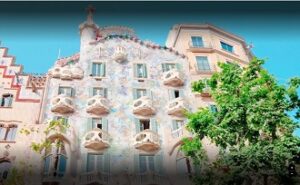 the idealist sense, but Schiller himself is a descendant of this vision, even though he tried to rebuild “the unity of human nature”, in this he is right, he thought of rebuilding in the modern idealist way.
the idealist sense, but Schiller himself is a descendant of this vision, even though he tried to rebuild “the unity of human nature”, in this he is right, he thought of rebuilding in the modern idealist way.
For Hegel, aesthetics, and therefore the Beauty, is the science that deals with the artistic beauty and not the natural beauty, for him the natural beauty is a product of the spirit (Geist), and, because it is a product of the spirit, it participates in the truth and what exists in nature, see that the spirit as well as the idealist “transcendence” is linked to nature and to the human, it is far from the mystical spiritual.
For an internal revolution to idealism, three currents of art are immersed in it: symbolism, classicism and romanticism, for many modern authors, I quote Byung Chul Han, the culture of the smooth, the flat and the “transparent” (glass, glass, etc.) plastics, etc.).
This pseudo-revolution that took place within idealist art is called self-overcoming, a kind of what was called in German idealism the New Hegelians, but it makes an even deeper division in art: painting, music and poetry.
Sculpture is considered a “noble” art, says Hegel: ““Sculpture introduces God himself into the objectivity of the external world; thanks to it, individuality manifests itself externally through its spiritual side” (Hegel, 1996, p. 113), again the exterior is objective, a sculpture and not a Being, the other and with him all his subjectivity.
Symbolism, on the other hand, was the one that “seeks to achieve the union between internal meaning and external form, that classical art achieved this union in the representation of the substantial individuality that addresses our sensibility, and that romantic art, spiritual in essence, surpassed” (Hegel, 1996, p. 340).
Seeing the consequences of this “romantic” thought, Hans-Georg Gadamer will criticize Dilthey’s romantic vision of consciousness, with serious consequences for modern historicism, almost all of which are idealistic and distant from reality, thus creating the “ideal” model for consciousness is for the beautiful and not to transform it as the idealists think to do.
I consider art nouveau, mainly by Antoni Gaudí (in the photo Casa Batlló, in Barcelona) the most faithful expression because it recovers natural elements (light, color, air and nature) without “affections” and traces of symbolism and romanticism, such as for example, present in the “Style Tiffany” in the United States or the “Style Glasgow” in the United Kingdom that has elements, in my view, of symbolism, although also called “art nouveau”.
Returning to the previous post, there is a confusing vision of ethics because it is separated from aesthetics.
What does it mean to see
We explore blindness a lot in our posts: philosophical (in Plato’s Republic, the myth of the cave), logical (Parmenides, Russell, Hilbert, etc.), religious (Feuerbach, Hegel, etc.) and literary (Saramago’s blindness essay and the Plague of Camus), just to name a few, besides them we navigated about the language in Heidegger, Hans-Georg Gadamer, Levinas, Ricoeur and others.
the myth of the cave), logical (Parmenides, Russell, Hilbert, etc.), religious (Feuerbach, Hegel, etc.) and literary (Saramago’s blindness essay and the Plague of Camus), just to name a few, besides them we navigated about the language in Heidegger, Hans-Georg Gadamer, Levinas, Ricoeur and others.
Now we want to navigate through the world of vision, said Bachelard: “all beings are pure because they are beautiful”, while the poet Alberto Caeiro “the world was not made for us to think about it, but for us to look and agree, also the Russian philosopher and mystic Nicolas Berdjaev (there are many Russian mystics) used to say that in Paradise there is no ethics and there is only aesthetics, all this to say that seeing is having eyes for beauty, which is why many things today that are ugly are self-proclaimed beautiful, so the inversion is not just ethical .
The ugly was for Plato, from the ontological point of view, the almost-nothing, the sensible world being what is apparently real, being mere shadows of ideas (the myth of the cave) and the ideal (eidos) the truly real, thus the ugly it is formless and has no real existence and is not a universal model.
It is not unnatural that in a fragmented world, on the brink of its polycrisis, beauty almost disappears, and so man does not see it, what he sees are shadows, drafts of diffuse and confused ideas, the universal model disappears and discourse is merely discourse. of the conflict.
We like the point, straight and flat, but this is Euclid’s Geometry, the world is not straight and flat.
The beautiful emerges in harmony, suggests fusion where there is division, confuses the chaotic by giving it form and even the world of pure form is no longer geometric it is fractal, not fractional, but a natural fraction belonging to the whole of the less significant part of the whole body (in the photo the Lorentz fractal and the butterfly effect).
From the logical point of view it is the approximation of chaos theory (there is chaotic logic), from the philosophical point of view it is the view of complexity (the simple is almost always simplistic), from the religious point of view one can say: “God created everything and saw that it was good” (and beautiful), from a literary point of view I think the best expression was Friedrich Schiller (1756-1805): “How are we going to rebuild the unity of human nature, which seems completely suppressed by this original opposition and radical?”(page 71), wrote in his work “Educação Estética do Homem”, about the division inside man between the formal impulse that drags him in the dimension of his time.
Seen as a poet it is a wonderful work, as a philosophy it is subject to criticism due to the historical distance of its time and the walls of the German ideology of its time.
SCHILLER, F. (1989) “Educação Estética do Homem numa série de cartas”, trad. Roberto Schwartz e Márcio Suzuki, Brazil, São Paulo: Editora Iluminuras.
Leaked documents and rhetoric of tension
A leaked document that would contain alleged US secret information about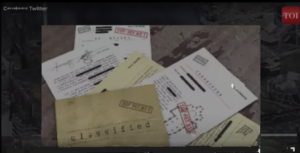 the war between Ukraine and Russia may contain part of the information true and some false, according to US military sources, the assessment of the death toll in the war in Ukraine would be false.
the war between Ukraine and Russia may contain part of the information true and some false, according to US military sources, the assessment of the death toll in the war in Ukraine would be false.
Newspapers like The New York Times, on the other hand, assess that it is an effort by Moscow to provoke more disinformation than news already known as the anticipated deliveries of weapons, as well as the formation of troops and battalions according to war strategies, however this already shows that there are some gaps in US intelligence in the effort to support Ukraine.
Pentagon spokeswoman Sabrina Singh said, “We are aware of the reports of social media posts, and the department is looking into the matter.”
The US Department of Justice opened investigations into these disclosures, which also included information from important allies such as Israel, South Korea and the United Arab Emirates.
American rhetoric and Western leaders continue to assert that Russia has committed war crimes, including the “deportation” of Ukrainian children to Russia, condemned by the Hague court, while Russian rhetoric continues to be one of insecurity at its borders.
What the documents reveal, although without precise data, is a probable Ukrainian offensive next month, Finland’s official entry into NATO creates another frontier of conflict and some Russian response is also expected there.
In terms of peace, the Brazilian proposal to cede Crimea, which was already Russian territory before the war, in exchange for the resumption of territories occupied in the current war, was not accepted by Ukraine.
So both Russia and Ukraine seem to be taking the war to the limits of attrition, the death of countless soldiers and the economic consequences that have begun to appear in the world economy.
China has hit back at rhetoric that it is not making enough effort for peace, saying the “West are not in a position to dictate what we should do”, Chinese Ambassador to Russia Zhang Hanhui told Izvestia.
The hope that negotiations can move forward from countries outside the conflict remains.
Civilizing passion: crisis and clearing
It is not the first civilizational crisis that humanity is going through today, if 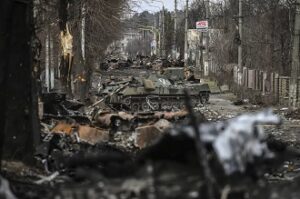 it has roots in the thought that developed a form of national and chauvinist polis, empires are the multinational expression of this way of looking at nations, this however has an aggravating factor: the possibility use of nuclear and biological weapons of mass extinction.
it has roots in the thought that developed a form of national and chauvinist polis, empires are the multinational expression of this way of looking at nations, this however has an aggravating factor: the possibility use of nuclear and biological weapons of mass extinction.
Because a passion comparing it with the passion of Jesus, we have already outlined the issue of innocence and the tragic and legal aspects that it involves throughout last week, Brazil experienced this week a drama in the city of Blumenau the death of innocent children, the world aspect is the one that from ideological conceptions and visions of the world promotes a limitless crisis, this is the passionate side (in the photo Bucha´s tragedy, Ukraine).
The entry that we announced at the beginning of the week, of Finland in NATO creates a large border area of NATO with Russia allowing a land war in an area where it is sensitive and there are remnants of recent historical intolerance, the so-called “winter war” from 1939.
If Russia takes what it calls a “countermeasure” and it could be in the military field, since in the economic and trade field there is nothing that could be more serious than the current situation between nations, military retaliation triggers a dangerous trigger. that will have a response from NATO.
A clearing is possible, the one that Heidegger claimed in the midst of these hostilities, the clarity that there will be no unilateral victories, the war with Ukraine itself does not seem to have a possible end this year, unless there is a round of peace negotiations.
China would take an offensive position in its resumption of the island of Taiwan, which it considers part of its territory, Iran is increasingly closer to Russia and a good part of Latin America currently has governments that are more to the left, in short, this complicated world scenario may be the reason to open a clearing in the middle of the forest of hatred and hostility that opens up at every step of the war.
It will be a great passion of humanity, like all suffering, this one on an unimaginable scale after a trauma and then a reflection when seeing the enormous losses that the situation involves, it will undoubtedly be in a possible tragic situation never seen before, a new “clearing” of civilizing consciousness .
Peace is always possible, it is always possible to avoid the loss of innocent lives if there is prevention.
Thought from on High and Communion
What kind of knowledge is this that encompasses knowledge “from above”,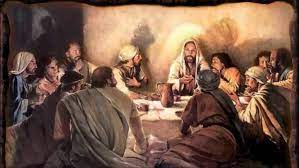 beyond the human, but without contradicting it, Morin’s response and others such as Martin Buber, Emannuel Lévinas and Paul Ricoeur seem to lead to the same point, to go towards the Other without reservation.
beyond the human, but without contradicting it, Morin’s response and others such as Martin Buber, Emannuel Lévinas and Paul Ricoeur seem to lead to the same point, to go towards the Other without reservation.
Two mystical falsifications are possible in this direction, one that denies conscience and respect for the Other, those who appeal to a false Christian religiosity, the Bible is clear: “If anyone declares: “I love God!”, but hates his brother, he is a liar” (1 John, 4:20-21), but there are those who cry out for the extreme opposite of the materiality of faith, to these the biblical answer is also clear: “Man shall not live by bread alone” (Matthew 4 ,4), curiously opposes and does not dialogue.
Curious because the vision of the last supper of Jesus with his disciples, his great memorial and his eternal presence in his materiality (flesh and blood), is the cause of much controversy and divergence, both true that he broke the bread, and true who declared his divinity.
Thinking things from above cannot fail to have its concreteness, its materiality, you see that bread is not wheat, but wheat transformed by human hands into bread, just like wine.
It does not fail to have the most sacred and divine aspect when asking the disciples to do this in his memory and in his name, thus it is renewed and divinized by the human hands that repeat it.
How to understand communion without the presence of the Other, without dialogic with the opposite, without this paradox of understanding that even with opposition, new horizons are possible, as advocated by the hermeneutic circle, which asks that preconceptions be left “in parentheses” before .
We have a vision of truth, logic and rationality, but true communion is only possible with a step further, the belief that something divine also belongs to the Other, to the different and the opposite of my worldview, there is no communion without this , there is only tolerance.
I have always asked myself why wars, hunger, misery, injustice among men, my answer today is that there is no true communion among men, perhaps some small tolerance, some respect that hides true interests, perhaps a respect that is even human but not divine.
The polycrisis and thinking aloud
When we think only of everyday things, they are important and even fundamental, we often fail to perceive what is deeper involved in them, the thought and culture in which we are immersed and which are rapidly pointing to a polycrisis.
The word coined by Morin was taken up again in an interview with Le Monde, where he emphasized: “The health crisis triggered a chain of crises that were linked together. This polycrisis or megacrisis extends from the existential to the political, passing through the economy, from the individual to the planetary, passing through families, regions, States. In short, a tiny virus in an overlooked village in China has unleashed the disruption of a world” (Le Monde, April 20, 2020).
In his book VI of Method: Ethics, he explains: “Our civilization separates more than it connects. We are in a deficit of reconnection and this has become a vital necessity”, so it is impossible not to think about things from above: empathy, civility, cordiality and other values that little by little were being lost and brutalizing us as a civilization.
As a complex thinker, his thinking is antidisciplinary (in the sense of rigid specialties) and transdisciplinary (in the sense of recovering the whole lost in rigid boundaries of thought that define only one aspect of life).
Operators of complex thinking (the book Introduction to Complexity is fundamental) is, as the word itself says, intricate and comprehensive, but I highlight two essential points of its method, the dialogic and hologramatic aspect.
The dialogical considers the union of opposite and contradictory terms as complementary, for example life and death, this paradox is lived in the sacred sense in this Easter week, although it is not limited to the religious, it can and should be thought of in the existential and political.
The hologramatic points out that the apparent paradox of systems are component parts of a whole (in picture the universe formation), just as each part has prefigured an aspect of the whole, the most common example is that of the kaleidoscope, but that of the human body is also interesting, each part is alive by the functioning of the whole and helps the whole to function.
We behave like fans who are fanatical and disinterested in the whole for exercising too much a material, purely earthly and human culture that makes the whole, the high and the divine inconceivable in everyday life.
welcome to polycrisis
This is the part of title of the article by Adam Tooze, professor of history at Yale University (USA) written in the Financial Times in 2022 that drew a lot of attention: pandemics, droughts, floods, mega storms, forest fires, war in Ukraine and high prices of fuel and food, as is typical of the magazine and of today’s world, the economic aspect stands out.
University (USA) written in the Financial Times in 2022 that drew a lot of attention: pandemics, droughts, floods, mega storms, forest fires, war in Ukraine and high prices of fuel and food, as is typical of the magazine and of today’s world, the economic aspect stands out.
But Edgar Morin’s polycrisis went deeper, the author recognizes the origin of the term, but is unaware of what Edgar Morin and many other philosophers actually think, who point to the most fundamental root of these evils: our way of thinking. thinking and the vision of the world that we create from it and implant in our societies.
The term cited by Morin was said for the first time in 1990, but in an interview with Le Monde on April 20, 2020, the French educator updated the word: “The health crisis triggered a chain of crises that were linked together. This polycrisis or megacrisis extends from the existential to the political, passing through the economy, from the individual to the planetary, passing through families, regions, states. In short, a tiny virus in an overlooked village in China has unleashed a world of disruption.”
In his view, the polycrisis crossed our ways of being, living together, producing, consuming and being in the world, challenging us to think about all our paradigms, much of what he wrote talks about new methods such as hologramatic and the danger of hyperspecialization of science that leads “to a new obscurantism” that is our inability to see the whole in modernity.
It is true that we are going through other crises, but Tooze’s article shows the implications of the war in Ukraine and the pandemic in accelerating these crises (see the Map), in the pragmatic aspect of the economic it is clear, in the spiritual and ontological aspect it is still not so clear , but it may be clearer soon.
A dangerous threshold of war
With the shipment of weapons to Ukraine NATO has prolonged Ukraine’s war with Russia in the tactical field for at least another year, this says Western and Russian analysts, but another front is threatened as Finland is about to join NATO only missing bureaucratic details.
Russia in the tactical field for at least another year, this says Western and Russian analysts, but another front is threatened as Finland is about to join NATO only missing bureaucratic details.
It irritates Russia more than seeing its border countries join NATO, this was even the claiming limit for war with Ukraine and Finland has the longest border of NATO countries with Russia, more than 1,300 km, comparable to distance between Porto Alegre in Rio Grande do Sul and Queluz on the border of the State of São Paulo with Rio de Janeiro.
Finland erects a steel cable fence on the border (photo), and the countries have already lived through a war called the Winter War (it has this name because it started at the end of November 1939 and ended on March 12, 1940 with a treaty in which it lost part of its territory and a good part of its industrial capacity).
Although Finland has a small army, at the time even smaller and is now arming itself, it resisted heroically, but lost a significant part of its territory (see our post) and feels threatened by the current war in Eastern Europe.
There is another likely target of the war which would be Moldova, there is already a small separatist region called Transnistria, but in the geopolitical aspect it is Finland’s entry into NATO that most affects Russia and creates a strong pole of tension and now the new iron Curtain.
Sweden is bigger and has a larger population, practically more than twice that of Finland and it has also been arming itself and the process of joining NATO is slower, but the war could accelerate this process and military aid to Sweden would be inevitable.
An appeal by Belarus, an ally of Russia, for a peace agreement and the recent visit of Xi Jinping to Russia, which was expected to have a greater commitment to peace, remains unknown and it is possible that Putin has exposed his plans, and this includes Brazil for being part of the BRICS and having postponed the trip to China due to pneumonia from president Lula, but China is waiting for the visit.
An eventual war with Finland would open a delicate pole of the war, since it is practically a member of NATO and military retaliations could come into play in an explosive way.
The horizon of a possible peace is becoming more and more distant and the possibilities remote.

